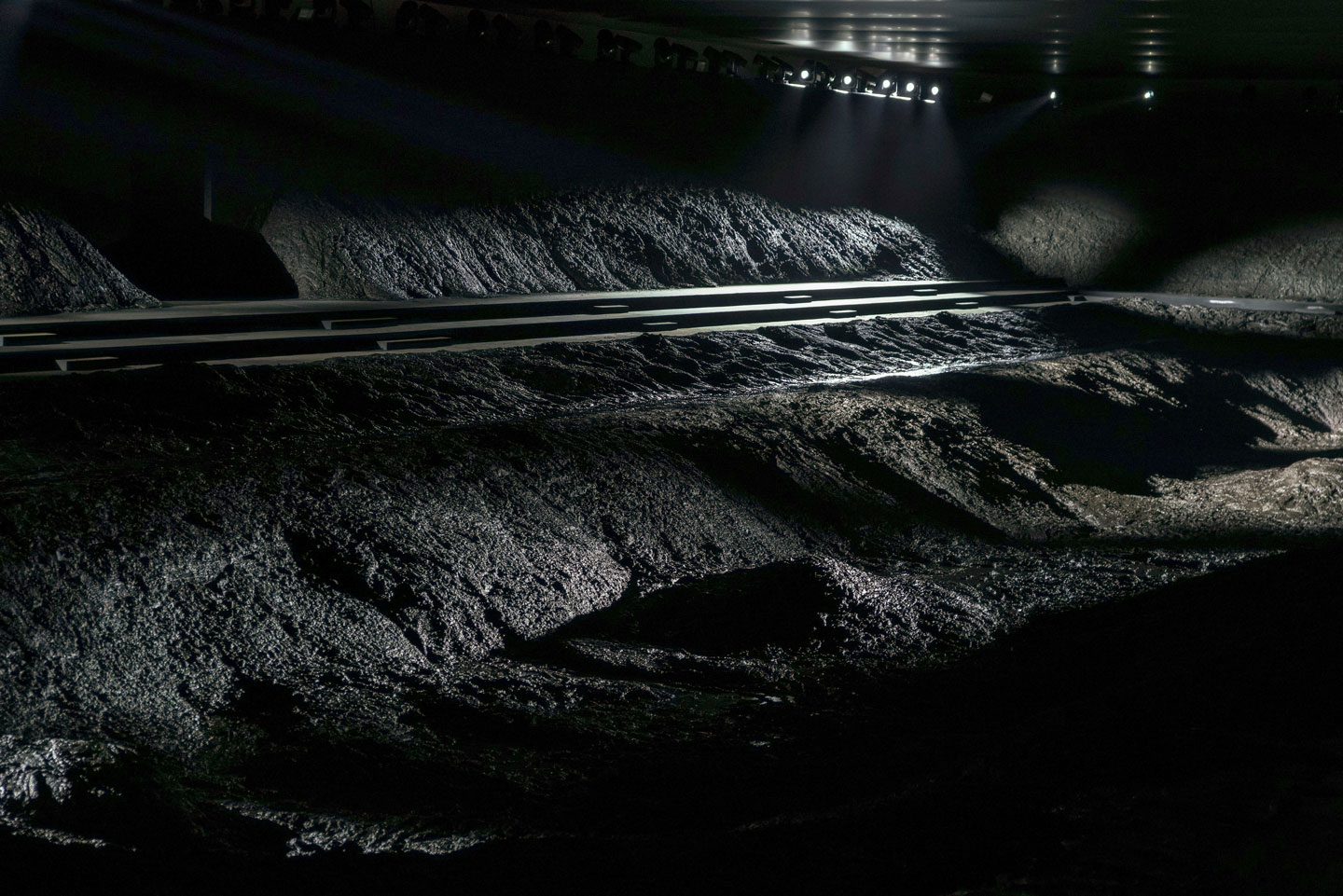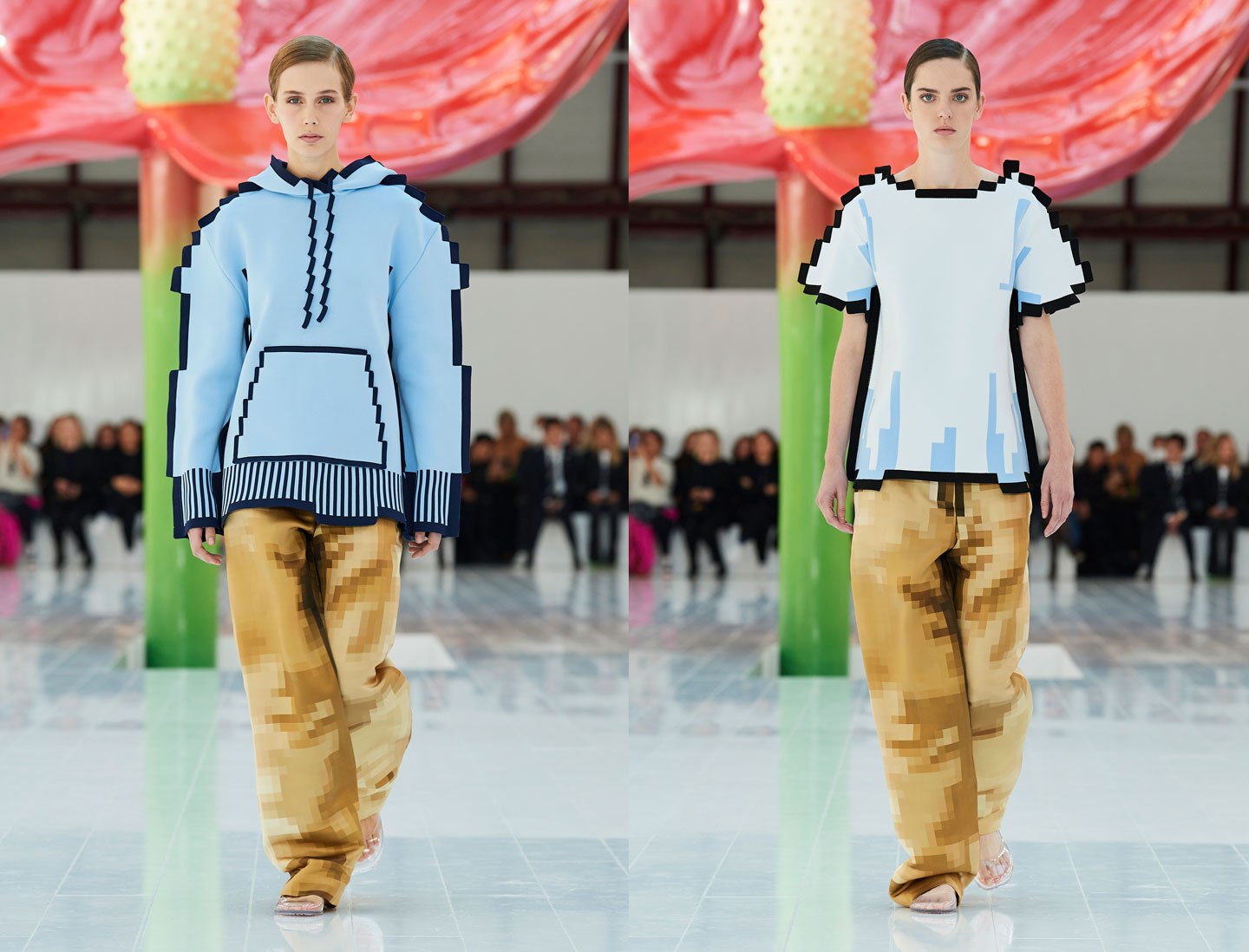





The “fashion month’s grand finale,” aka Paris fashion week, ended on Tuesday, 4 October. It may feel like things have cooled down now, so it is time to weigh them. It was perhaps not the most groundbreaking season in trends – as it kept with ideas already caught in New York, London and Milan, such as Y2K nostalgia and lingerie-inspired pieces – and still lacked about inclusive casting. Nonetheless, the clothes were made for conversation, and it certainly was not all about trends. But who says fashion week is just about trends? It was indeed the land of controversy: from the copycat issue to the representation of the state of fashion, industry players came to express thoughts, not clothes.

At Balenciaga, creative director Demna decided to truck 275 cubic meters of black mud into the middle of a convention center on the outskirts of Paris
It was a sprayed-on dress at Coperni’s Show that triggered an uproar in Paris, and the performance was awe-inspiring. For almost ten minutes, the audience watched a dress take shape on Bella Hadid’s body. The material – a patented spray developed by the London-based company Fabrican – looked like a spiderweb until the fibrous layers condensed, dried instantly into a pebble-like fabric, and effectively mummified the supermodel. The dress looks like cotton in the pictures, but it feels soft and stretchy, irregular like a sponge. However, the highlight of the dress was the dramatic moment of its creation, which went viral on social media. The performance was immediately compared to McQueen’s Spring-Summer 1999, where two robots sprayed a white dress worn by Shalom Harlow. Although the press immediately railed against the two emergent designers, the concept behind the British designer was to enhance the (violent) relationship between humans and machines.

Bella Hadid was spray-painted with a liquid fabric on the Coperni runway at Paris Fashion Week
In contrast, the two French designers meant precisely the opposite. They wanted to celebrate the connection between humans and technology. And they succeeded.
Then, there was Balenciaga, whose mud-slinging show attempted to represent the condition of the fashion system. Spoiler: shattered. The performance was opened by Kanye West, now at the centre of heated debates after showing the ninth season of his brand, YZYSZN9. The collection included oversized down jackets, seamless home wear and knee-high boots – all firmly rooted in the rapper’s style. But what horrified the audience, not just those in attendance, was the graphic "White Lives Matter" T-shirt worn by Ye – in the past, Kim Kardashian’s ex-husband has expressed controversial opinions on race. At this point, the question arises: is the musician really a multifaceted talent who deserves the industry’s respect, or is he just good at stirring up controversy? Posterity will judge.

Kanye West opened the Balenciaga spring-summer 2023 fashion show

The ninth season of Kanye West's brand, YZYSZN9
Attracting attention does not require creating a scandal, and the bigwigs at Loewe know that very well. Jonathan Anderson did it his way, impressing the public with handmade looks featuring pixelated squares. The effect was even more visible to smartphone viewers, where the pieces looked like virtual, NFT-like clothing. The line between reality and virtual fiction got blurred for a moment.

At Loewe, Jonathan Anderson impressed the public with handmade looks featuring pixelated squares
Among the Parisian scandals, Chanel closed the fashion week by responding to the week's fervour with “We prefer a dream, a bit of serenity, to controversy”, as brand president Bruno Pavlovsky explained to The Guardian.
Who knows, maybe we do not believe in dreams anymore.
Sofia Sarandrea
Fashion Business, Digital Communication and New Media, 3rd year, Milan


